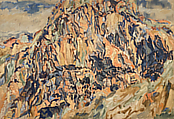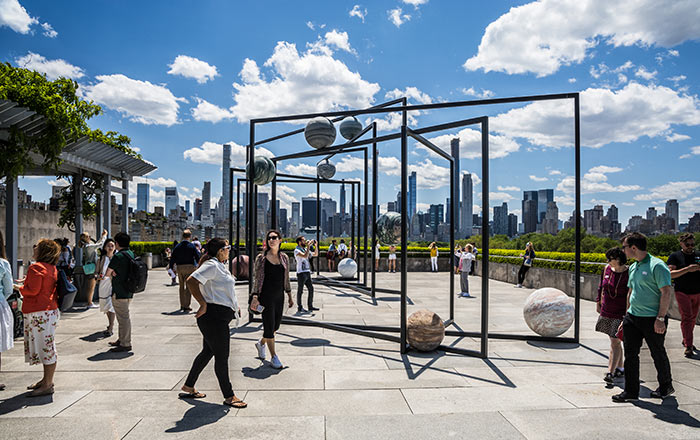Positano #1
Philip Pearlstein American
Not on view
Before he became renowned as a painter of the nude figure, Philip Pearlstein garnered critical acclaim with his paintings of the rocky landscapes of Maine and later, Italy. Spurred by conversations he had in the mid-1950s with the artist (and eventual fellow instructor at the Pratt Institute) Mercedes Matter, Pearlstein spent a summer at Deer Isle in Maine where he found in the rock formations an abstract source through which to work out his painterly ideas. Soon thereafter in 1958–59, Pearlstein traveled on a Fulbright scholarship to Italy, where he had been stationed during his army service in World War II.
In 1959, Pearlstein made extensive studies of the rocky cliffs along the Amalfi Coast (including at Positano) and Positano #1 was based on drawings made at the site. Over the succeeding decades, even as he focused on figurative painting the artist returned to Positano. He later linked his early landscapes of the region to his later nudes, explaining "I see the figure as landscape; the landscape as figure – they’re the same!"
This image cannot be enlarged, viewed at full screen, or downloaded.

